SUNDERBAN DIARIES: Hethal bushes and Gosaps
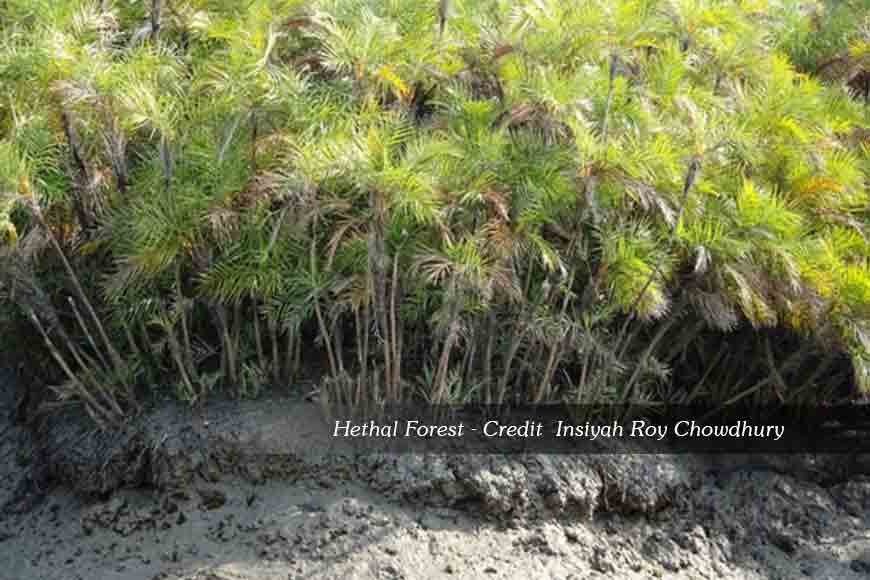
Sunanda Bose is an activist and member of Taki Zamindar Family. She is also a great story-teller and reminisces her childhood tales of Sunderbans
My first glimpse of the real Sundarbans was in 2004 when I went to arrange ‘Legal Awareness Camps’ in remote areas like Basanti, Gosaba, Jogeshgunge and Bali Dwip. My complete view about Sundarbans changed.There were no special bamboo jetties built for us. There were huge flights of stairs, nearly three stories high. During high tide the water rose and there were less steps to climb. During low tide, not only did the water recede below the last step, it moved back quite a distance from the ghat, leaving an expanse of mud. The boats which were now fitted with diesel engines could not come near the ghat. The only option then was to wade through the slippery mud and arrive at the edge of the water in a mud caked condition and somehow climb on to the deck of the vessel. If the distance is not much, a wooden plank would be balanced with one end on the boat and the other on the step of the ghat. Then holding on to the long bamboo pole, held on one side by two men, one had to perform a trapeze feat and climb on to the boat.
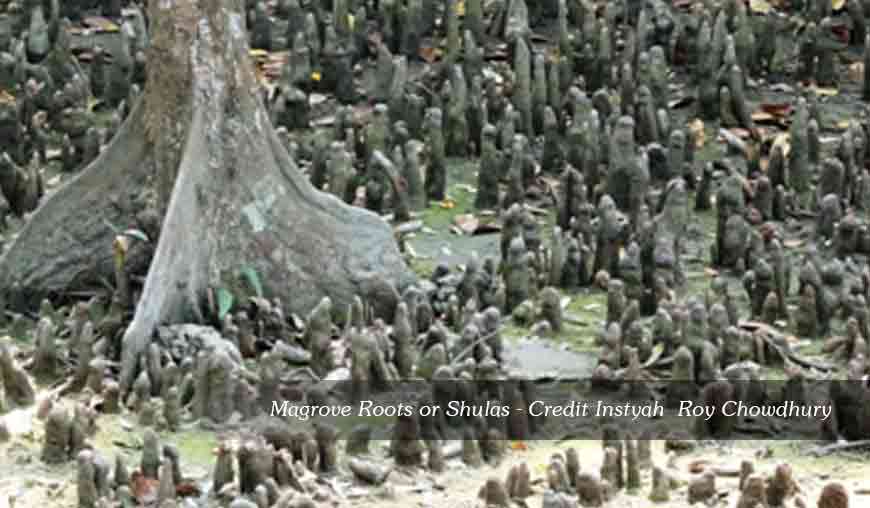
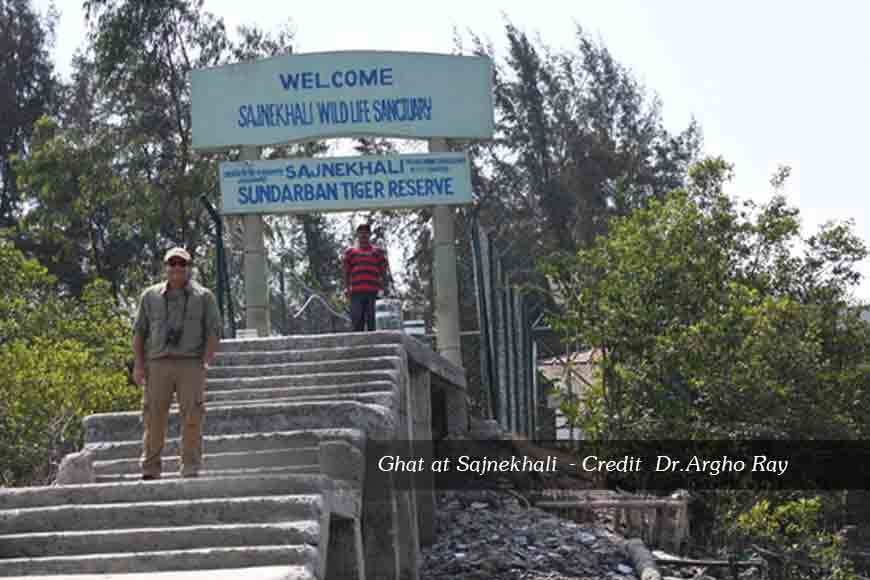
One cannot enter the core area of Sunderbans, without taking written permit of the Forest Department. The permit is obtained from the Tourist Resort at Sajnekhali which is in the core area. The resort at Sajnekhali is built on a platform on raised stilts and have to be climbed up to the first floor level by stairs.Being in the core area,tigers often pay surprise visits there.Early morning when I woke up, I found an uncanny eerie silence. Something was bothering me at the back of my mind. I suddenly realised what it was. There were no birds chirping. At the back side, there was a dense forest. At night we had seen deer standing outside the barbed wire. Obviously, no birds lived nearby.
The forests of Sundarbans have a grandeur of its own. Miles of mangrove trees with leaves of different hues which help the King of the Forest, camouflage himself easily. There were so many islands and creeks leading into the interior, where tourist boats cannot enter, due to the shallow water there. There are two opinions about the nomenclature of Sundarbans. Some say it means a Beautiful Forest. Others claim it derives its name from the tall Sundari Trees, which are found in plenty in the forest and are an important variety of mangrove. Locals call it So(n)dor Bon after those trees. The mangroves have peculiar breathing roots. During high tide, the trees are submerged in water. However, they continue to breathe through spike like roots called Shula, which remain over the water and provide oxygen to the submerged trees. After the tide water recedes, the trees again appear. The mangroves which are seen on the river side are Byne, Kali Byne, Keora, Sundari and most important of all is a mangrove which has palm like leaves slightly tinted with yellow called Hethal. Hethal Bushes are the tigers’ favourite hiding place as its stripes get merged with the Hethal tree quite easily. Monkeys and deer are very fond of keora leaves and its sour fruit which provide them with nutrition that they in their turn pass on to their hunter, the Tiger.
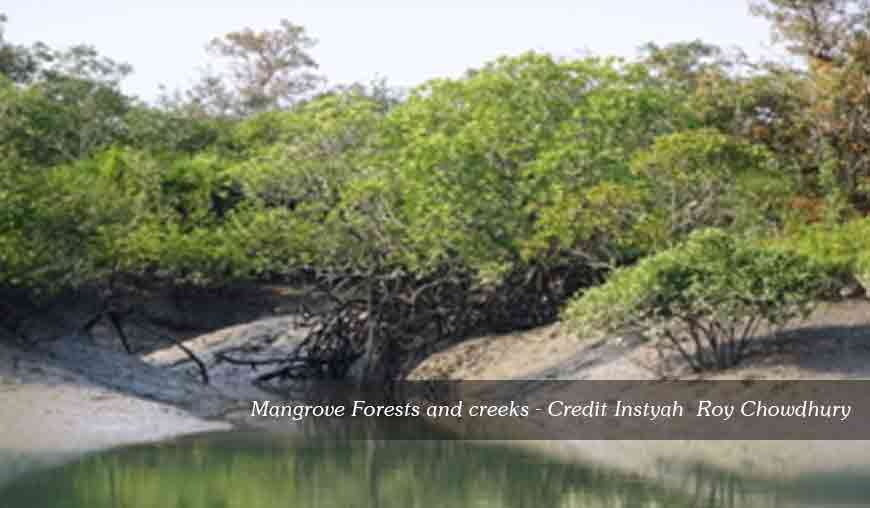
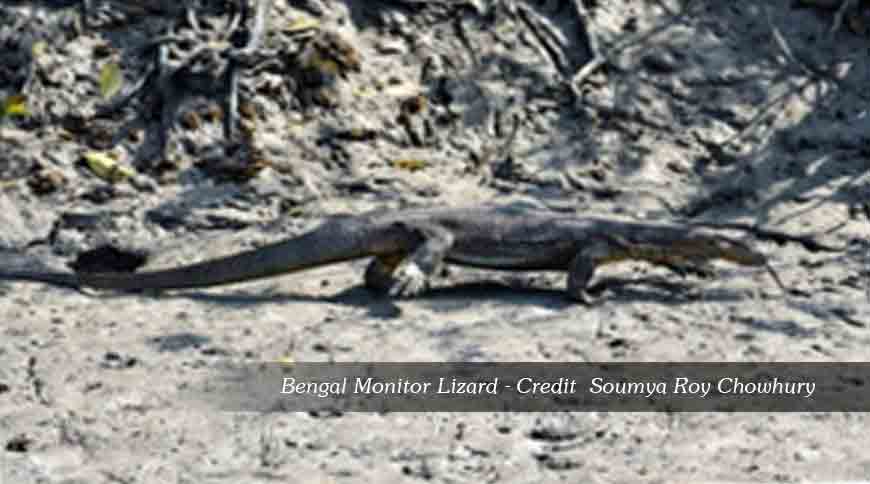
The forest is full of animals of various kinds. But there was a time when poaching was rampant in Sunderbans, that not only endangered the biodiversity of the region, but practically destroyed the natural food for the tiger.Result was that the Tiger was compelled to visit human habitations as humans were encroaching its habitat.Fortunately, the authorities have been able to impress upon the local youths, the importance of preserving Sundarbans in their own interests.Locals have realised the potentiality of the natural resources and the benefit of preserving the Sundarbans. Now, deer and wild boar poaching, as well as tiger poaching have been minimised. Locals have formed vigilance committees and are earning as guides and tour operators. The result is increase in the population of the denizens of the forest. Another species which were hunted by locals for their meat and were nearly becoming extinct were the Bengal Monitor Lizard, locally known as Gosap. Now they are seen more often.









